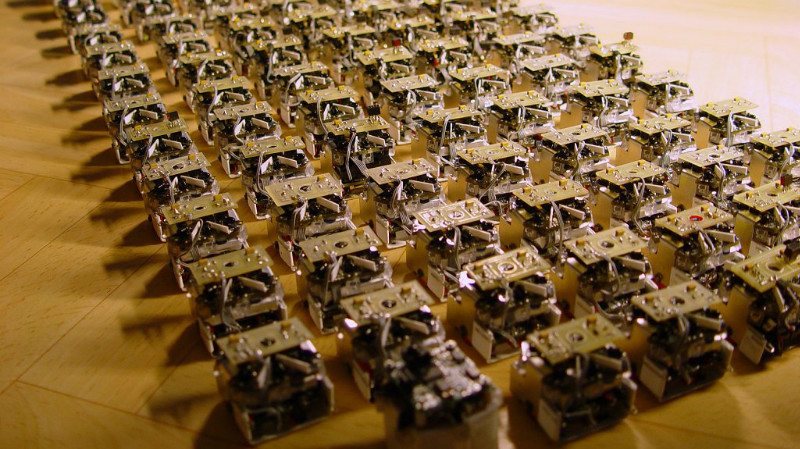Robot Swarm Works Together Spontaneously
Scientists at Harvard University have designed a swarm of 1,024 mini robots that can assemble, change formation and work together without needing any guiding intelligence. A report in Science Alert explains that the coin-sized robots are able to assemble themselves into a range of 2D formations by wobbling around with a vibrating movement until they have formed shapes such as stars or letters of the alphabet. Each Kilobot is programmed to know how to follow the group’s perimeter, how to map the distance it travels, and how to maintain an understanding of its relative position. The swarm of bots may become useful for creating programmable matter.
Nanomaterials to Fight Cancer
According to a recent report from Phys.org, a team of researchers at Yale University has developed a new form of cancer treatment that can enhance a patient’s immune cells. This novel form of immunotherapy can be grown outside the patient’s body using nanotubes made of a carbon polymer, then injected into the patient’s blood stream to help fight cancer. The scientists used the nanotubes to incubate cytotoxic T cells, a type of white blood cell that is vital for immune system support and destroying cancer cells. Once injected into the patient’s body, the cells dramatically boost the body’s ability to fight the disease.
High-tech Collar Turns Cats Into Cyber Warriors
NBC News reports a new device can turn your pet into a cyber-sleuth to track down hackers. The techno kitty collar, known as WarKitteh, has a built-in device that is able to create a map of wireless networks and also detect their weakest points. The collar is designed by security engineer Gene Bransfield, who used a relative’s cat to test its effectiveness. According to Bransfield, the device revealed that a third of the 24 wireless networks the collar scanned were vulnerable to cyber attack.
Image Credit: Humansinvent.com



















